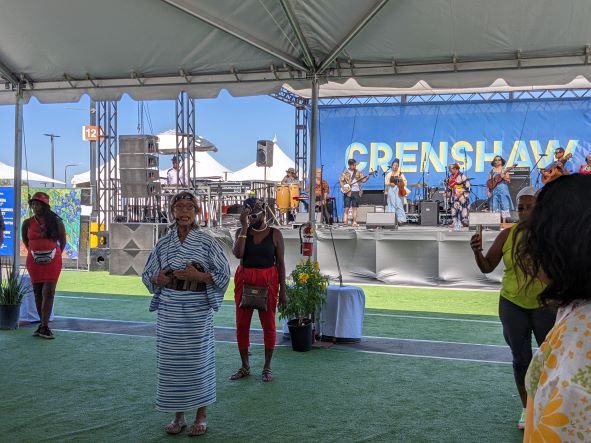This is the English translation of my Japanese article to appear in Nikkan San on August 21st, 2022, as a part of my bi-weekly column, “The Way of the Pianist.
I have lived in Japan only for seven years of my life, between six to thirteen, but I still have many fond memories of natsu-matsuri, summer festivals. Kingyo-sukui is a traditional Japanese game where you scoop little goldfish with a paper scooper that is easily torn, especially when it becomes wet. Yo-yo- tsuri is another game. You hook a small colorful balloon full of water with a wimpy metal hook that easily bends with weight and pressure. And of course, there were lots of food vendors; cotton candies, shaved ice, candied apples and apricots… These natsu-matsuris in my memory still carry much of its sounds in my ears. The drums resonate at the bottom part of your stomach. The bamboo piccolos soar through to the sky. The vendors call in their customers with their sing-song phrases to join the fun. Adults are laughing and children are squeaking. And often in the background were the songs accompanying the bon-dance, or bon-odori, a traditional circle dancing to welcome the spirits of the ancestors.
Unexpectedly, this summer, I re-encountered these natsu-matsuri scenes and bon-odori, in Hawaii, Seattle and Los Angeles.
In Hawaii, where the number of Japanese and Japanese-Americans exceeded 40% of Hawaii’s population at one point in the 20th century, natsu-matsuri and its bon-dance became an important annual tradition. Every summer, from the end of June to the beginning of September, its many Buddhist temples take turns to host their natsu-matsuri on the weekends. When I visited my friend in Lahaina Jodo Mission in May, the community was getting together to prepare for their festival. In Seattle, on the last night of the US-Japan Leadership Program conference, fellows and delegates from both Japan and the U.S. danced around in big circles, still unsure of the specifics of the choreography after a fifteen-minute rehearsal, laughing at ourselves and each other. And last Saturday, as a part of the Nisei Week Japan Festival in Little Tokyo at Downtown Los Angeles, people danced happily together in front of the Japanese-American National Museum where much of its exhibit sheds light on the dark history of Japanese-Americans internment during WWII. The next day, in Crenshaw, where many Japanese-Americans released from the internment went to live, I joined Fandangobon, mixing the obon tradition with Fandango of Vera Cruz, Mexico and other traditions of circular dances from West Africa.
Toddlers were stepping the steps and waving their arms, imitating the adults around them, making us all smile. A lady who reminded me of my late grandmother smiled at me as she wiped her sweat off her forehead. As we let the rhythms take over our bodies, we transcend our generations and cultural/ethnic differences, and even national borders and historical time periods. We have always danced, sang, and laughed together to bond, and to thrive in our unity.
